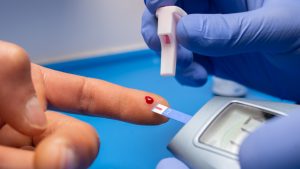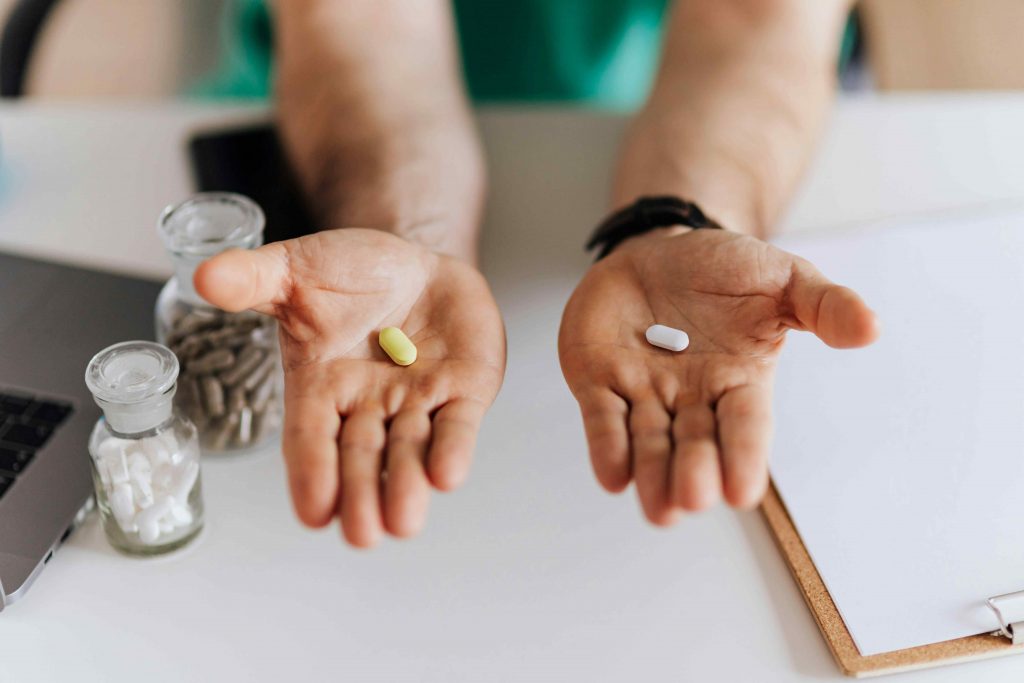Fatty liver and type 2 diabetes are closely linked, with each condition influencing the other in various ways. Understanding their relationship is crucial for managing both effectively. In this article, we will explore how fatty liver and type 2 diabetes are related, including their underlying mechanisms, common risk factors, symptoms, and approaches to management and prevention.
Understanding the Connection
Fatty liver, or hepatic steatosis, involves an accumulation of fat in the liver. Type 2 diabetes is characterized by insulin resistance and elevated blood glucose levels. The interplay between these two conditions can impact overall health and well-being.
1. How Fatty Liver Affects Type 2 Diabetes
Fatty liver can exacerbate insulin resistance, a hallmark of type 2 diabetes. When fat accumulates in the liver, it can interfere with the liver’s ability to regulate glucose and insulin, leading to higher blood sugar levels. This interaction can make it more challenging to manage blood glucose levels and may require additional strategies for effective control.
2. How Type 2 Diabetes Influences Fatty Liver
Conversely, type 2 diabetes can increase the risk of developing fatty liver. Elevated blood glucose levels and insulin resistance can contribute to fat buildup in the liver. The condition often reflects an imbalance in metabolic processes, where excess glucose is converted into fat and stored in the liver.
Common Risk Factors
Understanding the common risk factors that link fatty liver and type 2 diabetes can help in identifying and managing these conditions effectively:
1. Obesity
Obesity is a significant risk factor for both fatty liver and type 2 diabetes. Excess body fat, particularly visceral fat around the abdomen, is associated with increased fat accumulation in the liver and insulin resistance. Addressing obesity through lifestyle changes can positively impact both conditions.
Additional Research:
- A study published in The Journal of Clinical Endocrinology & Metabolism found that abdominal obesity is strongly linked to both fatty liver and type 2 diabetes, highlighting the benefits of weight management in improving insulin sensitivity (JCEM, 2023).
2. Sedentary Lifestyle
A lack of physical activity contributes to weight gain and insulin resistance. Regular exercise helps improve insulin sensitivity and reduce liver fat. Incorporating physical activity into daily routines can support overall metabolic health and reduce the risk of developing both conditions.
3. Unhealthy Diet
Diets high in refined sugars, saturated fats, and processed foods can contribute to both fatty liver and type 2 diabetes. Adopting a balanced diet rich in whole grains, lean proteins, and healthy fats can help manage blood glucose levels and support liver health.
4. Genetics and Family History
Genetics can play a role in the predisposition to both fatty liver and type 2 diabetes. A family history of these conditions may increase the risk, but lifestyle modifications can mitigate this risk and improve health outcomes.
Symptoms to Watch For
Both fatty liver and type 2 diabetes can present with similar symptoms. Recognizing these symptoms early can lead to timely management and improved outcomes.
1. Fatigue
Fatigue is a common symptom of both conditions. Insulin resistance and elevated blood sugar levels can lead to low energy levels. Addressing these symptoms through lifestyle changes and medical care can enhance overall vitality.
2. Abdominal Discomfort
Discomfort or a feeling of fullness in the upper right side of the abdomen can be associated with fatty liver. In the context of type 2 diabetes, it may also indicate imbalances in blood glucose control.
3. Unexplained Weight Changes
Unexpected weight loss or gain can be a sign of metabolic disturbances related to both conditions. Monitoring weight and consulting with a healthcare provider can help address these changes effectively.
4. Increased Thirst and Frequent Urination
Elevated blood glucose levels in type 2 diabetes can lead to increased thirst and frequent urination. Managing blood sugar levels through diet, exercise, and medication can help alleviate these symptoms.
Diagnostic Approaches
Effective diagnosis involves a combination of medical evaluations and tests to understand the relationship between fatty liver and type 2 diabetes:
1. Medical History and Physical Examination
A thorough review of medical history and physical examination can help identify risk factors and symptoms related to both conditions. This initial assessment guides further diagnostic testing.
2. Laboratory Tests
- Blood Glucose Levels: Regular monitoring of blood glucose levels helps manage type 2 diabetes and provides insight into metabolic control.
- Liver Enzymes: Elevated liver enzymes can indicate fatty liver and help guide treatment strategies.
- Lipid Profile: Assessing cholesterol and triglyceride levels can provide additional information about metabolic health and liver function.
3. Imaging Studies
- Ultrasound: A liver ultrasound is commonly used to detect fat accumulation in the liver and assess its extent.
- CT Scan and MRI: These imaging techniques offer detailed views of liver structure and fat distribution, aiding in the diagnosis of fatty liver.
4. Liver Biopsy
In some cases, a liver biopsy may be recommended to assess the degree of liver fat accumulation and any potential liver changes. This procedure provides valuable information for tailored management.
Managing Fatty Liver and Type 2 Diabetes
Effective management involves addressing both conditions simultaneously. Here are key strategies for improving health outcomes:
1. Balanced Diet
- Nutrient-Rich Foods: Focus on a diet rich in vegetables, fruits, whole grains, and lean proteins. Limiting refined sugars and saturated fats can improve both liver and metabolic health.
- Portion Control: Managing portion sizes helps regulate calorie intake and supports weight management.
2. Regular Exercise
- Physical Activity: Incorporate at least 150 minutes of moderate physical activity per week, such as walking, swimming, or cycling. Exercise helps improve insulin sensitivity and reduce liver fat.
3. Weight Management
- Gradual Weight Loss: Achieving and maintaining a healthy weight can positively impact both fatty liver and type 2 diabetes. Aim for gradual and sustainable weight loss through lifestyle changes.
4. Medication and Medical Follow-Up
- Medication Adherence: If prescribed, take medications as directed to manage blood glucose levels and support liver health.
- Regular Check-Ups: Schedule regular appointments with a healthcare provider to monitor progress and make necessary adjustments to your management plan.
E4 Helps you:
At E4, we’re dedicated to revolutionizing how people manage type 2 diabetes through our innovative E4 Alive program. Our team of specialists has joined forces to create a comprehensive solution aimed at empowering individuals to take charge of their health journey. With personalized support and resources tailored to each person’s unique needs, we make managing diabetes simpler and more effective than ever before.
E4 Alive offers a range of tools and resources to help you better understand and control your blood sugar levels. Our program provides personalized guidance to create a healthy eating plan and integrate regular physical activity into your daily routine. Plus, you’ll have access to a supportive community of individuals who understand your challenges and are there to offer encouragement and guidance every step of the way.
By joining E4 Alive, you can effectively manage your blood glucose levels, improve long-term glycemic control, reduce your risk of diabetes-related complications, and enhance your overall quality of life. It’s not just a program; it’s an opportunity to reclaim your health and vitality. Ready to start your journey to better health? Visit THIS PAGE to learn more about E4 Diabetes Solutions and the E4 Alive program.
To learn more about E4 Diabetes Solutions and the E4 Alive program, visit THIS PAGE.

Type 2 Diabetes: Is It Really Reversible?
A recent National Geographic article [link] explores how type 2 diabetes could be reversible with the right approaches. This condition, which affects millions of people worldwide, has long been considered a chronic and progressive disease. However, recent research challenges this perception and suggests that with lifestyle changes and the right approach, remission is possible. The

How Do GLP-1 Drugs Compare? A Breakdown of Ozempic, Mounjaro, and Trulicity
GLP-1 receptor agonists have revolutionized diabetes management, with drugs like Ozempic, Mounjaro, and Trulicity leading the market. But how do these medications compare in terms of effectiveness, side effects, and patient outcomes? Let’s explore their differences and what they mean for diabetes patients. Understanding GLP-1 Medications GLP-1 receptor agonists mimic a natural hormone that helps

Why Has Medicare Spending on Diabetes Medications Skyrocketed in 5 Years?
In the past five years, Medicare spending on diabetes medications has increased nearly fivefold, reaching $35.8 billion in 2023. This surge has been primarily driven by the growing use of GLP-1 drugs such as Ozempic, Mounjaro, and Trulicity. But what is behind this cost escalation, and how does it affect patients and the U.S. healthcare

The Gut Microbiota and Blood Sugar Control: A Hidden Connection
The human gut is home to trillions of bacteria that play a crucial role in digestion, immune function, and even metabolism. Recent research has revealed a fascinating link between the gut microbiota and blood sugar regulation, shedding light on how the balance of microbes in our intestines can influence diabetes risk and overall metabolic health.

The Dawn Phenomenon: Why Blood Sugar Rises While You Sleep
For many people with diabetes, waking up with high blood sugar levels can be frustrating—especially if they didn’t eat anything overnight. This early-morning spike in blood glucose is known as the Dawn Phenomenon, and it happens due to natural hormonal changes in the body. But why does it occur, and how can it be managed?

The Influence of Red Light on Blood: Can It Improve Diabetes?
Type 2 diabetes is a metabolic disease characterized by insulin resistance and elevated blood glucose levels. In the search for complementary alternatives to improve glycemic control, red light therapy has gained attention due to its potential to enhance circulation, reduce inflammation, and optimize cellular function. But what does science say about it? ✨ What is

